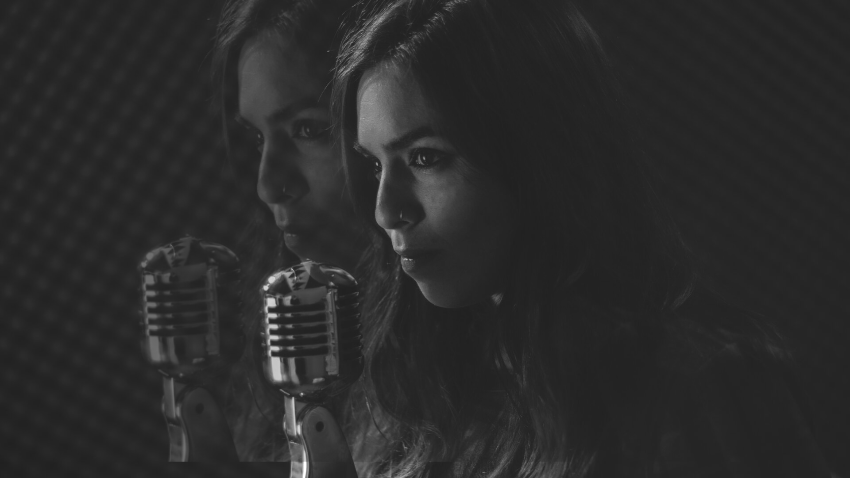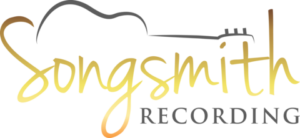
“Vocal Doubling Enhances Recordings”
As always you are making progress. Your recordings are improving and while you are understandably excited about that, there are still some issues. Specifically, you are a little bit disappointed about how the mixes are shaping up in regard to the vocals.
For what every reason, no matter what you do, it just doesn’t make the vocal stand out in the track. This ultimately leaves you with a vocal take that doesn’t come over as special and present as the other elements that were captured for the mix.
If you are the singer recording for yourself at this point you may be thinking deflated thoughts. You know very well that you delivered your performance with the very best effort you were capable of. Now you’re thinking maybe you’re not as good as you thought.
If you’re the recordist wanting to earn a little bit of income out of this second job, you know you will need to start handing over a more desirable product. You clients demand that. In order to keep them coming back you’ll need to make them happy.
This is where the idea of doubling vocals comes in. It is a great solution because vocal doubling enhances recordings by adding depth. Doubling helps to enhance the performance with a secondary take. The second take is added to the first. It contributes subtle variant complexities that help the vocals to stand out. This helps to make the entire recording seem more interesting. But while the word double may be obvious what is doubling vocals exactly?
What is Doubling Vocals?
Vocal doubling is the process of layering two vocal tracks. This technique is used to enhance the sonic quality of one vocal take by reinforcing it with another. While the outcome of doing so may be slightly unnatural the effect is otherwise audibly pleasing. The secondary track fills in any gaps in the first. Additionally it thickens it in a way that helps it better cut through and stand out in the mix.
This technic dates back quite a long ways and it is still commonly used in modern rock and roll music. That should not suggest that you be restricted from doing it if you are making another style of music. You shouldn’t
While it isn’t necessary to use this technique all the time; It is useful to know. A lot of songs use it. The reason they do is simply. Doubling vocals results in an interesting way to hear a vocal recording.
When exclusively applied onto a chorus or bridge, it helps to give those portions of the song an extra umph. It will add to their memorability and distinction. Doing so helps those parts to stand out from the ones that proceeded. Doubling can also help to accentuate certain portions of the song that are served by standing out.
So How to Go About It
There are a few ways to make sure that vocal doubling enhances your recordings. But, let’s start with layering takes. Before doing any of that though you will need to turn on your computer and open your favorite DAW. After that you are going to need to create a couple of audio tracks and get ready to download a plug in or too.
Overdubbing a Secondary Layer
Layering takes is starts by having the artist record one well delivered pass through the song. Then after all necessary punch-ins have been made and any necessary edits are attended to you arm another track. When you are ready have the artist overdub a second take exacting the previous performance to the best of their ability.
Take Two
The second take should not be a harmony of any kind. It is not intended to be a background vocal either. It is intended as a double. If you are tracking your own vocals and if I were your coach I’d tell you to sing it again identically. So, if you’re recording a client then that may be the best way for you to convey to them the expectation.
While we are using the word identical, don’t be confused. Do not think that identical means it’s ok to copy and paste the original take onto a secondary track? You should NOT do that.
Merely duplicating the track would only cause for an increase in volume. That increase in volume would not be accompanied with any of the subtle nuances that we were intending to achieve.
A Nearly Identical Performance
From a bird’s eye view the first recorded take and the second are the same. But, zooming in will reveal that these two tracks actually share an infinite number of variances. And those variances are vocal doubling gold.
In order to make sure everything works out be sure that the timing elements are lined up well and that all of the syllabic sustains match the original for duration. That goes the same for the pitch of each note in the performance. Both of the performances should match as well as possible.
It would benefit you to record the second take immediately after the first, the longer you delay between recording the first and second take the more likely it will diverge from the first.
Automatic Double Tracking
Historically this method involved using a tape delay of the vocal with ever the slightest modifications to the sonic attributes of that delay. In these modern times it is a lot more straight forward and easily implemented.
With the advent of designated plug-ins; one no longer has to involve themselves with the signal routing that their predecessors had to. Merely apply a reliable vocal doubling plugin to the track. Then enjoy yourself dabbling with the parameters.
Don’t give yourself too much pressure by trying to implement this technique in your session today. Especially with an artist barely know standing over your shoulder watching the clock.
Practice Makes Perfect
Instead spend some off-time figuring it out. Open a session and experiment how to implement the plug in. Spend time adjusting all of the various parameters until you have have an understanding. When you are up to speed with how those adjustment affect the recording you can work them into the mix.
You can learn as much from understanding what doesn’t work as from what does.
One significant benefit you might find from working with a plug in is it’s practicality. It lends to the efficiency of everything. It alleviates the pressure on your artist by removing an expectation for them to replicate a complicated vocal take. Ultimately saving them money.
Using the plug-in eliminates the time it would take your performer to record a double well. It also eliminates the time it would take to edit those takes.
Keep in mind, your reputation as a mixer/producer are on the line. Strike a balance between trying to save the artist money, and them leaving with a recording that represents you well.
In Conclusion
There is a lot that goes in to recording and we are constantly doing our best to improve and expand our knowledge base. If you have listened to popular music then you are definitely familiar with how vocal doubling enhances recordings. Start using the technique on your song and measure the results in your Spotify streams.
Using It will go along way toward making the song seem a lot larger than life. If you haven’t tried vocal doubling for yourself yet, then why not give it a shot? You may just find that it is the perfect go to move for taking your mixes to the next level.
Without constant experimentation and innovation all that’s left is stagnation. So you should be making it a regular habit of acclimating yourself with new skills anyways. Besides, if it was good enough for John Lennon then it’s probably good enough for the rest of us.
My intent with writing this was to provide you some introductory insight into a really cool effect. I sincerely hope that the article has been of some use to you, and wish you the best with everything you are working on.
Now go and get to it!
Good luck!
